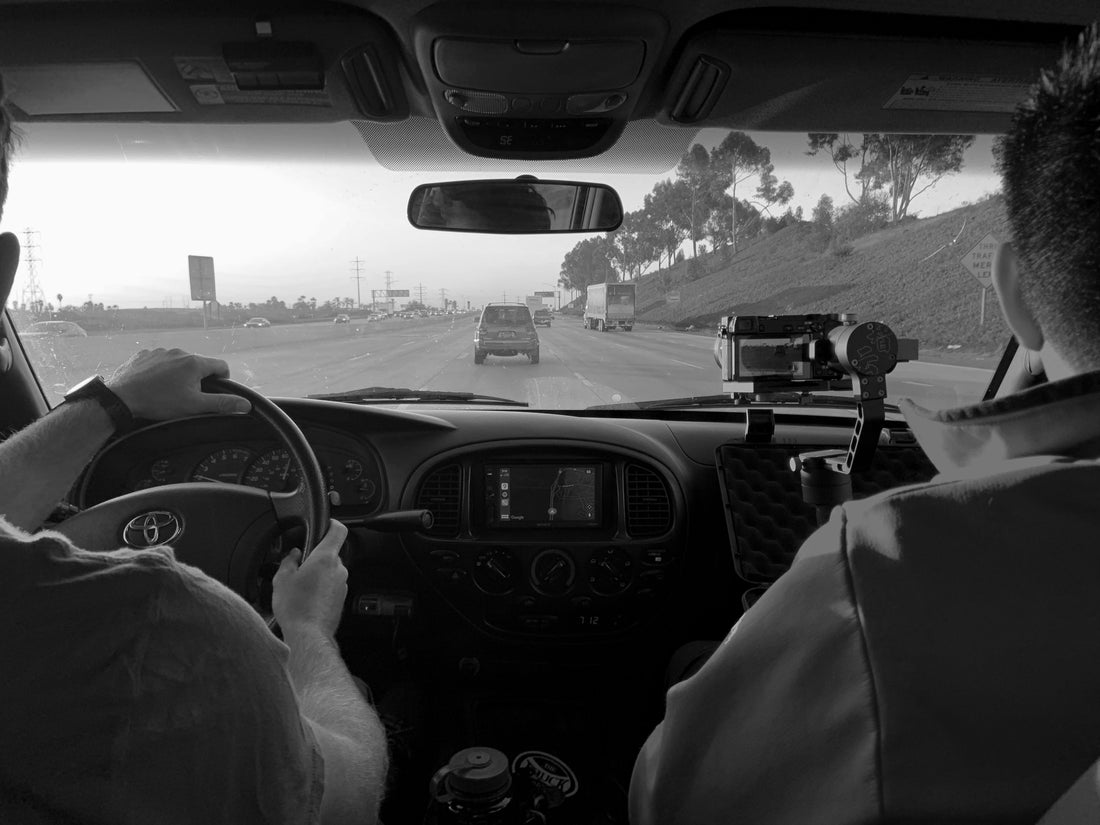
The Threadline: Shooting Video Content
Share
Being a brand owner in 2020 has been absolute chaos, it’s crazy out there, and things are changing every day. But there is one thing that has been consistent, which is the fact that video content has been on the come up and everyone is trying to make more of it as well as make more quality video.
Here at Industry Threadworks, we are rebranding an existing brand, AXIX, so we did a video shoot for our launch. We thought it was a great opportunity to show you how we prep for videos to make sure that we are ready to go when we get on set and have a good storyline.
Setting your Intention
The first step is you want to make sure that you have your intention set because this is what drives the video, the storyline, and what you are trying to achieve with the video. For our particular video, like I mentioned we are planning to rebrand AXIX and push it in a totally different direction, so our intention is to portray out with the old and in with the new.
Emotional Response
The second thing you want to think about is what type of emotional response you want the viewer to have when they see your video. Do you want them to feel sad when they watch it, or excited, or hyped up? A lot of the times it’s not so much the design but about the message itself. You can have an awesome design for your products but that combined with emotional response and good overall message will make people feel more inclined to purchase it. If your brand makes them feel a certain way, they are going to want to be a part of it and support you as well as just live that brand ethos that you are creating.
Creating a Title
After you have your intention and emotion created for the video, you can easily come up with a title. Even if your video doesn’t really need a title or there isn’t anywhere that people are going to see the title it’s a good idea to make one because it guides you and keeps you on track with your intentions and emotional response. Once you are on set this is particularly useful because when you are doing different shots you can easily identify if something is going to work or if a particular shot might not fit the storyline.
Creating a Storyboard
Next you want to create a sort of story board, so you have a rough plan of what you are going to do for the video itself. What we did was break up the video basically beginning, middle, and end scene and then put notes for each or drawings that maybe help you get ideas out there. Once you have this all finished you can take a picture or do whatever is easiest to bring it with you as a reference while you are doing the shoot.

Basically, you are coming up with an action plan and making sure you are sticking with it and ensure that you are prepared for everything. You also want to consider all of the things that might restrict you from doing your shoot like for example, is the area you are going to accessible to the public? Or, what the weather is going to be like that day? When we chose the location for our shoot, we didn’t prepare fully, and we didn’t realize that the area we were going to was heavily monitored by border patrol which meant we had to get the okay from them to even get on the trail. If we wouldn’t have been able to get onto the trail it would have been a complete waste of time and we would have lost a whole day of shooting, so doing your research and preparing is critical. Additionally, if you are bringing props and are questioning whether one would be needed, just bring it anyways because it is better to have it and not use it than to have missed an opportunity.
Following these steps can really help guide you in the right direction and also help with getting a video that you are happy with and that resonates with your audience. This ultimately can lead to people buying into your message and your whole story as well as your products. So, as a recap, for your next video you want to make sure you start with deciding on your intention, determining the emotional response, and creating a title for yourself that helps make the story cohesive.